

Alma Thomas: Painting a Rainbow. Here’s an activity that’s not only a perfect way to demonstrate brush control and paint mixing but get to know an amazing artist, Alma Thomas.
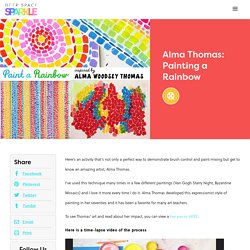
I’ve used this technique many times in a few different paintings (Van Gogh Starry Night, Byzantine Mosaics) and I love it more every time I do it. Alma Thomas developed this expressionist style of painting in her seventies and it has been a favorite for many art teachers. To see Thomas’ art and read about her impact, you can view a few pieces HERE.
Here is a time-lapse video of the process You can find the full length Facebook Video HERE. Download my mixing colors worksheet by clicking the yellow button below: Start by mixing some fun paint colors. Snowflake Activities for Kids. Monthly Freebie Packs. International Cloud Atlas. Puffy Paint Clouds. Simple and fun, but still educational !
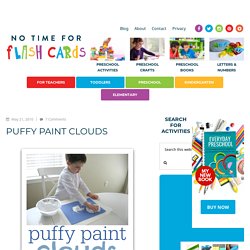
This cloud painting activity is great sensory experience for toddlers and preschoolers. It opens up a dialogue about weather too. You can use the shaving cream puffy paint like we did or simply ( and not as messy) use regular old white paint. I liked that we used the cotton batting to make clouds with” clouds “and my son liked it too but it would be tricky for toddlers if you are using the puffy paint, finger painting would work great since the paint dries puffy.
Gather your materials . Let dry- the paint will dry puffy! Weather Song ( to the tune of Clementine) What’s the weather? Tell me _(insert kids name)__ what’s the weather,What’s the weather like today? Free Printable Templates & Coloring Pages. 1 Open the printable file above by clicking the image or the link below the image.
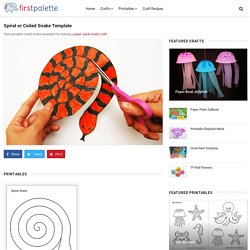
You will need a PDF reader to view the file. 2 Print out the file on A4 or Letter size paper. 3 Draw patterns and color the snake. 4 Cut out the snake following the outer outline. 5 Cut out the snake following the spiral or coiled line. 6 Step-by-step illustrated instructions are outlined at our Paper Spiral Snake craft. At-Home Art Activities for Kids & Families. Picasso Snowman Art Activity For Kids. A Simple Way to Teach Your Students to Design Patterns. When I first started teaching art, I wanted my students to learn to draw using the elements and principles while experimenting with media.
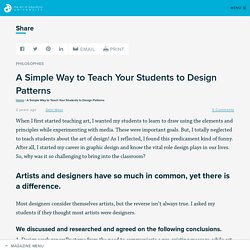
These were important goals. But, I totally neglected to teach students about the art of design! As I reflected, I found this predicament kind of funny. After all, I started my career in graphic design and know the vital role design plays in our lives. So, why was it so challenging to bring into the classroom? Artists and designers have so much in common, yet there is a difference. Most designers consider themselves artists, but the reverse isn’t always true. How to Make Sidewalk Chalk. Grade Levels. Van Gogh Inspired City at Night Art Project.
My last art project with my K/1 class was designed to use up my leftover paints and paper scraps.
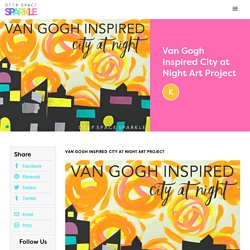
I’ve done City At Night Paper Collage with my Kinders before. Instead of a plain background this time, students painted swirls to imitate Van Gogh’s Starry Night painting. I’ve seen other art teachers do similar projects and I loved the vibrancy of the whole piece. Creating the Starry Swirls We used left-over fluorescent paint for the background/sky. Adding Paper Scrap Details. Teaching Foreground, Middleground, and Background- the Easy Way. Teaching the concept of creating space in an artwork through the use of foreground, middleground, and background while working on a flat piece of paper can be tricky to say the least.

Use this free fold up printable to help your students envision exactly how these elements of landscape stack up! Landscape divided…. Foreground, middleground, and background are concepts that apply to many 2-D projects. They are evident in both still lifes and landscapes but for our purposes we’re going to stick with landscapes. The foreground, middleground, and background divide the landscape into different planes that the artist uses to create a sense of depth.
What is the foreground of a landscape… Marble Paper Science: 2 easy ways to marble paper with kids. With these two marble paper science projects, art meets science for an easy and beautiful STEAM activity.
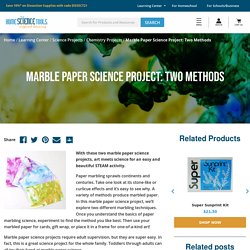
Paper marbling sprawls continents and centuries. Take one look at its stone-like or curlicue effects and it’s easy to see why. A variety of methods produce marbled paper. In this marble paper science project, we’ll explore two different marbling techniques. Once you understand the basics of paper marbling science, experiment to find the method you like best. Easy Art Projects for Kids: Watercolors & Oil. Van Gogh's Painting Style Lesson Plan: Painting for Kids - KinderArt. Students will learn about Vincent Van Gogh as they create a painting in his style.
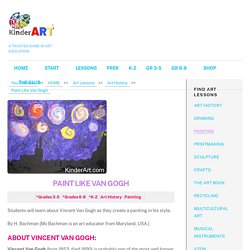
By H. Bachman [Ms Bachman is an art educator from Maryland, USA.] About Vincent Van Gogh: Vincent Van Gogh (born 1853, died 1890) is probably one of the most well known and influential artists of the 19th century. The son of a Dutch pastor, the young Van Gogh worked for picture dealers along with his brother Theo. During his life, Van Gogh lived in various locations including Brussels, The Hague, Antwerp and Drenthe and in his travels, taught himself to draw and paint, in addition to taking the occasional art lesson.
Where before his work was dark in color with heavy forms and subject matter depicting peasants at work in the fields, in Paris, Van Gogh’s paintings began to take on a somewhat Impressionistic feel. What You Need: What You Do: An Elementary Art Blog – Art lessons for kids and tips from an elementary art teacher. Mini Matisse: 8th Grade. I am so excited to post this lesson today because it's something I have been working hard on in the past month.
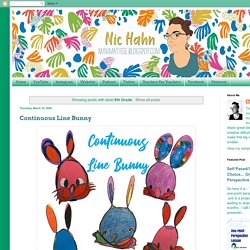
I'm also excited to see this lesson used in other classrooms because it has been one of the most engaging lessons I have ever done with my students. Allow me to introduce to you, 'Paper Design'! I share 8 different ways to design paper. Each lesson is clearly marked with a title page and preview of the end result. Each lesson also has a supply list. Then, each lesson has a well lit, close up video of hands in action creating the designed paper.
Exploded Squares. Art Lessons. Juego musical - Psicomúsica□ Erupting Watercolor Absorption Art. I'm thrilled to be kicking off an art series called Easy Art Projects for Kids.
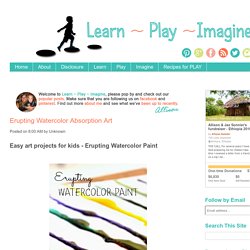
My kids will be exploring different art mediums and ways to create, and I will be sharing the process twice a month along with several of my favorite bloggers! Puzzle games - Artful Maths. Masterpieces to Mathematics: Using Art to Teach Fraction, Decimal, and Percent Equivalents. Art can make science easier to remember.
Art and science may seem like polar opposites. One involves the creative flow of ideas, and the other cold, hard data — or so some people believe. In fact, the two have much in common. Both require a lot of creativity. People also use both to better understand the world around us. Now, a study finds, art also can help students remember better what they learned in science class. Mariale Hardiman is an education specialist at Johns Hopkins University in Baltimore, Md. The researchers worked with teachers in 16 fifth-grade classrooms.
In a traditional science classroom, for instance, students might read aloud from a book. The team then randomly assigned each of the 350 students to either a traditional science classroom or an art-focused one. Please Don't Eat the Artwork. I have a seen a bunch of versions of this on Instagram and Pinterest lately with all different variations in materials and style. I wanted to try it out with my 4th graders in between our clay unit and our stitching unit as a easy drawing and painting project. It was a huge hit! The first day, we began by measuring the paper into sections and creating horizontal lines. Then students wrote their names in a way that filled up the space and traced over the lines with sharpie. On the second day, we reviewed warm and cool colors. Nice work 4th graders!